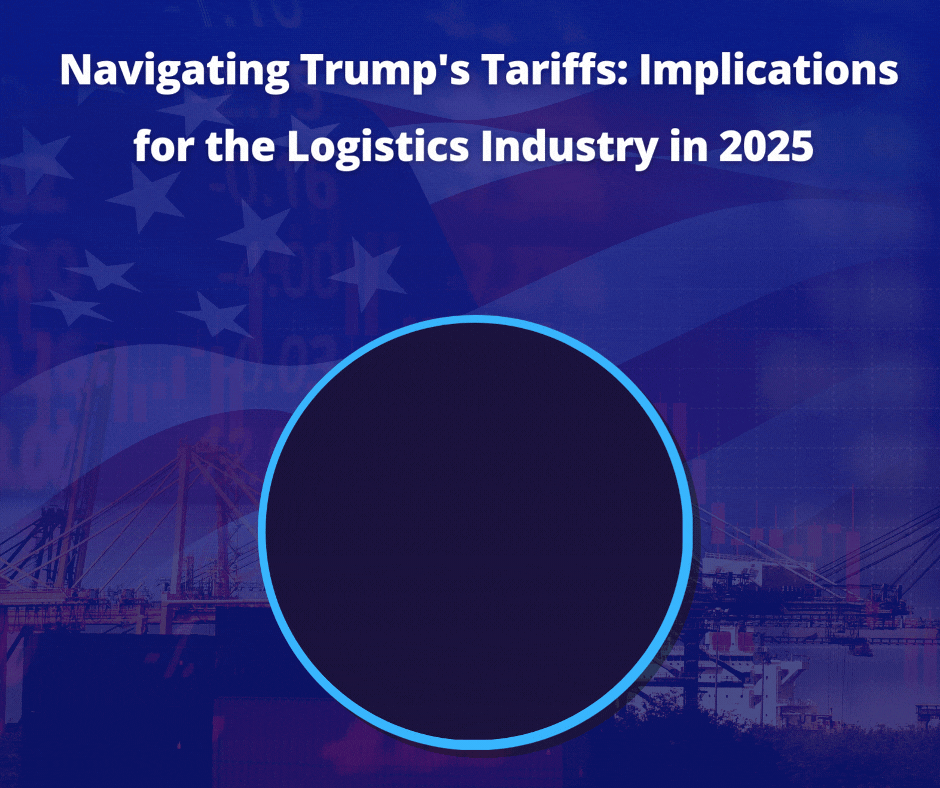
Subtitle: A Comprehensive Analysis of How Proposed U.S. Import Tariffs Could Reshape Supply Chains, Increase Costs, and Transform Global Trade
Intro
With a new set of U.S. tariffs on the horizon, logistics professionals are preparing for a landscape that could look vastly different in the coming years. President-elect Trump’s proposal includes sweeping tariffs—10-20% on all imports, up to 60% on goods from China, and as high as 100% on certain products from Mexico. These taxes would not only increase import costs but also disrupt supply chains, potentially leading to shifts in shipping volumes, freight rates, and even supplier relationships.
For the logistics industry, this presents a mix of challenges and opportunities. As costs rise and trade routes shift, firms will likely need to adopt new strategies, including increasing automation, exploring alternative trade partners, and restructuring supply chains to manage risks. Here, we examine the ways in which these tariffs are expected to impact logistics, from operational costs to competition and technological adaptation.
1. The Role of Tariffs and How They Reshape the Logistics Landscape
Defining Tariffs and Their Economic Impact
Tariffs are taxes applied to imported goods at the point of entry, and they have been a favored economic tool for centuries. By raising the price of foreign goods, tariffs can encourage domestic purchases, thereby benefiting local industries. However, these taxes come with a cost: Tariffs tend to raise consumer prices, reduce trade volumes, and create inefficiencies in production. Studies from the International Monetary Fund (IMF) and the Tax Foundation show that tariffs can shrink an economy’s output by discouraging trade, ultimately impacting labor, investment, and overall productivity.
Recent Tariff Proposals and Key Statistics
President-elect Trump’s tariffs are some of the steepest proposed in recent U.S. history. With 10-20% tariffs on all imports, a significant 60% tariff on goods from China, and a tariff of up to 100% on certain Mexican products, these taxes could reshape the cost of imported goods. According to a recent report by Moody’s Analytics, these tariffs would likely cost the U.S. economy up to 3.6% in real GDP by 2028, especially if other nations retaliate. This means substantial shifts for the logistics industry, which will feel the impact through decreased shipping volumes, disrupted supply routes, and new, region-specific logistical demands.
2. Operational Cost Increases and Supply Chain Adjustments
Impact on Freight and Shipping Costs
One immediate impact for logistics companies will be rising freight and shipping costs. According to a study by Fitch Ratings, an average 10% tariff on imports could increase overall transport costs by as much as 15% due to higher handling, warehousing, and processing fees. For logistics firms that operate on tight margins, this increase could be significant. Furthermore, the knock-on effects of higher freight rates might cause smaller firms to lose market share to larger operators that can absorb costs more easily.
With companies needing to pass on increased prices to customers, the cost of final goods might rise by up to 10%, according to the Peterson Institute for International Economics. For the logistics industry, these higher costs could mean slower demand growth and increased client pressure to seek cost-effective alternatives.
Shift in Supplier and Destination Preferences
The tariffs also create incentives for companies to explore alternative suppliers in lower-tariff countries—a fact that could change longstanding shipping routes and demand in certain regions. For example, if a 60% import tax makes sourcing from China unviable, companies might pivot to suppliers in Vietnam, India, or other countries with favorable trade agreements. This shift could, in turn, drive more shipping volume through Asian ports other than China. Logistics companies would have to adapt by establishing new regional hubs or rerouting supply chains.
Reports from the American Action Forum show that nearly 40% of manufacturers are already considering alternative supplier regions to reduce their tariff exposure. This shift could lead to increased demand for logistics services in new markets, impacting freight volumes and introducing new complexities in terms of customs, compliance, and infrastructure needs.
3. Trade Volumes and Shipping Demand: A Mixed Outlook
Anticipated Decline in Import Volumes
The tariffs are projected to decrease U.S. demand for certain imports, which directly affects shipping demand. According to a report by UBS Wealth Management, the new tariffs could cause import volumes to decline by 1.0-1.5% over three years, which in turn would impact containerized freight rates and reduce the profitability of certain shipping lanes. In particular, high tariffs on Chinese goods would likely reduce shipments from Asia, with long-haul container traffic from Asia to the U.S. potentially declining by as much as 8%, according to Fitch.
Potential for Domestic Shipping Growth
While international shipping volumes might face pressure, domestic logistics might see a boost as tariffs encourage companies to re-shore production. This shift could result in increased demand for trucking, rail, and domestic warehousing as goods flow through U.S.-based supply chains rather than relying on international imports. Recent data from the American Trucking Associations (ATA) suggests that the industry could experience a 2% uptick in demand for domestic transport services as companies pivot toward U.S.-based sourcing.
While this is a potential growth opportunity for domestic logistics, the challenge lies in reconfiguring supply chains, which involves new infrastructure investments and could take years to fully implement. This adjustment would require significant coordination and might not fully offset the loss in international freight volume.
4. Competitive Pressures and Technological Adaptations
Increased Competition and Cost Pressures
Logistics companies might also experience heightened competition as they face higher operational costs and lower import volumes. In this high-cost environment, smaller firms are particularly vulnerable because they often lack the financial cushion that larger competitors have to absorb the tariff-induced increases. According to a survey by Euromonitor International, nearly 50% of small logistics firms report concerns about reduced competitiveness due to rising costs.
Technology and Efficiency-Driven Adaptations
To offset these pressures, logistics companies are turning to technology. Investing in automation, AI, and route optimization tools can help logistics providers manage costs while maintaining service quality. For example, digital tracking and AI-driven route planning can cut down on fuel and labor expenses, which is crucial in an era of rising overhead costs. A report by McKinsey found that logistics firms investing in digital tools could see efficiency gains of up to 15%, providing a critical edge in a market squeezed by tariff costs.
Some logistics companies are also adopting blockchain for enhanced tracking and security. Blockchain can streamline customs processes, reduce paperwork, and improve transparency in tariff management, thereby helping firms manage tariff-related complexities with greater ease and accuracy.
Wrapping Up
The proposed tariffs will likely create lasting changes in the U.S. logistics industry, reshaping everything from freight volumes to supply chain dynamics and cost structures. While higher import taxes might encourage some reshoring, the overall impact on logistics is mixed, with increased operational costs and tighter profit margins posing a real challenge. However, as logistics companies invest in technology and look to diversify supply routes, they might find new ways to stay competitive. Ultimately, the industry’s response to these tariffs will underscore its resilience and adaptability in a volatile global trade environment.

